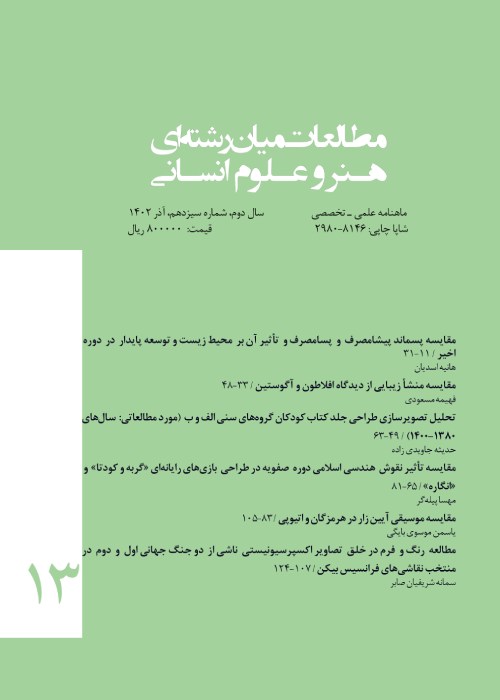Examining the Progression and Evolution of the Clothing Patterns of the Kurdish People Living in the Northeast of Razavi Khorasan
In addition to structural and aesthetic indicators, we would like to categorize the arts in terms of cultural-social components, production fields, and proportions with the environment and geography. In that case, clothing has been the most important practical tool of mankind from the past until now, which can be the narrator of culture due to its conceptual and content characteristics. The social culture’s artistic and economic tastes and behaviors. The cultural-economic infrastructure of society’s management-government space has been influenced by all kinds of clothes throughout history, for this credit. The economic-industrial dimension has gradually overtaken the artistic-cultural extent as new methods and tools for fabric and clothing production and distribution have emerged. On the one hand, the artistic aspects of clothing, as a cultural heritage, are the narrator of traditional culture and art, and in this project, in particular, I have addressed the artistic features of Kurdish ethnic clothing. The characteristics of ethnic clothing and the main identity of clothing are essential for those who want to identify a part of their culture and identity in the future; Because the identity of each dress can be found in the expression of its characteristics. Such as fabric texture based on clothing design, fabric cutting, and clothing decorations (embroidery, needlework), all of which are important in terms of technique, role, and design, in the philosophy of motifs. Investigating the changes and evolutions of the clothing of the Kurdish tribes of Northeast Khorasan (Klat, laying, Zavin), the main goal of the research is that motifs have been examined from the point of view of style and pattern in the classification of tribal clothing. The method of library collection, field observation, and qualitative analysis have been employed in this research. According to the results of the research, the patterns of Kurdish clothing do not have a predetermined plan and are usually produced improvised, only the artist knows the name of the patterns used and most of these patterns have their name and were taken from nature and created by artists. These motifs are based on the culture of these people and are rooted in common beliefs.
- حق عضویت دریافتی صرف حمایت از نشریات عضو و نگهداری، تکمیل و توسعه مگیران میشود.
- پرداخت حق اشتراک و دانلود مقالات اجازه بازنشر آن در سایر رسانههای چاپی و دیجیتال را به کاربر نمیدهد.



